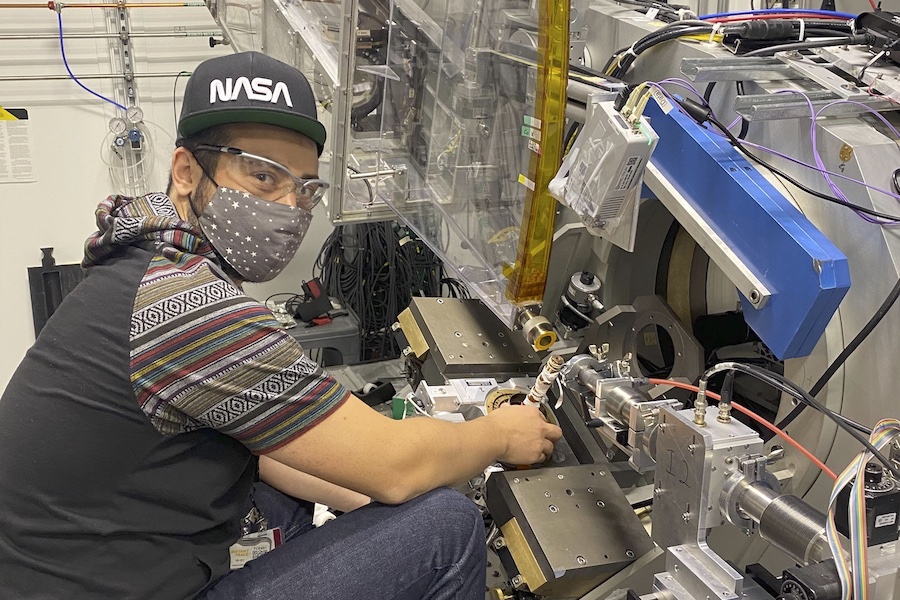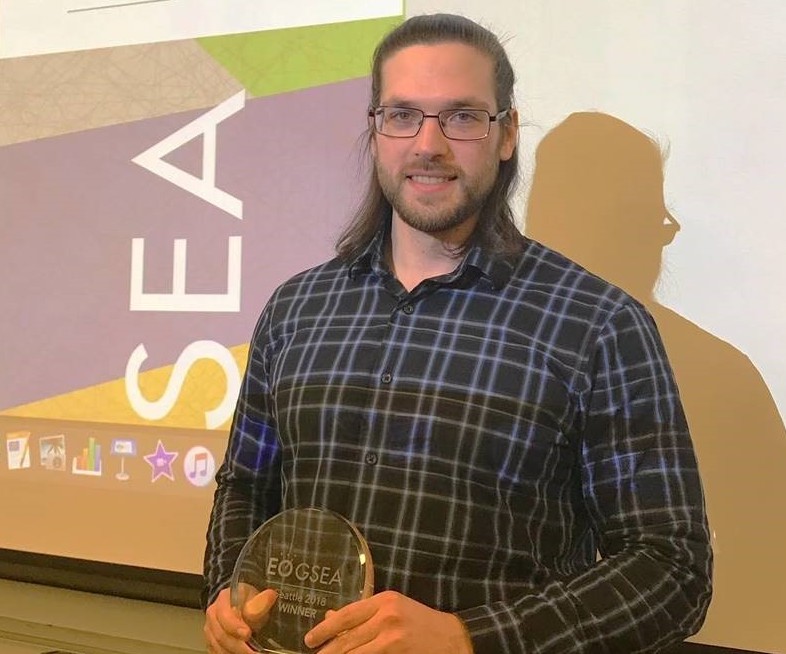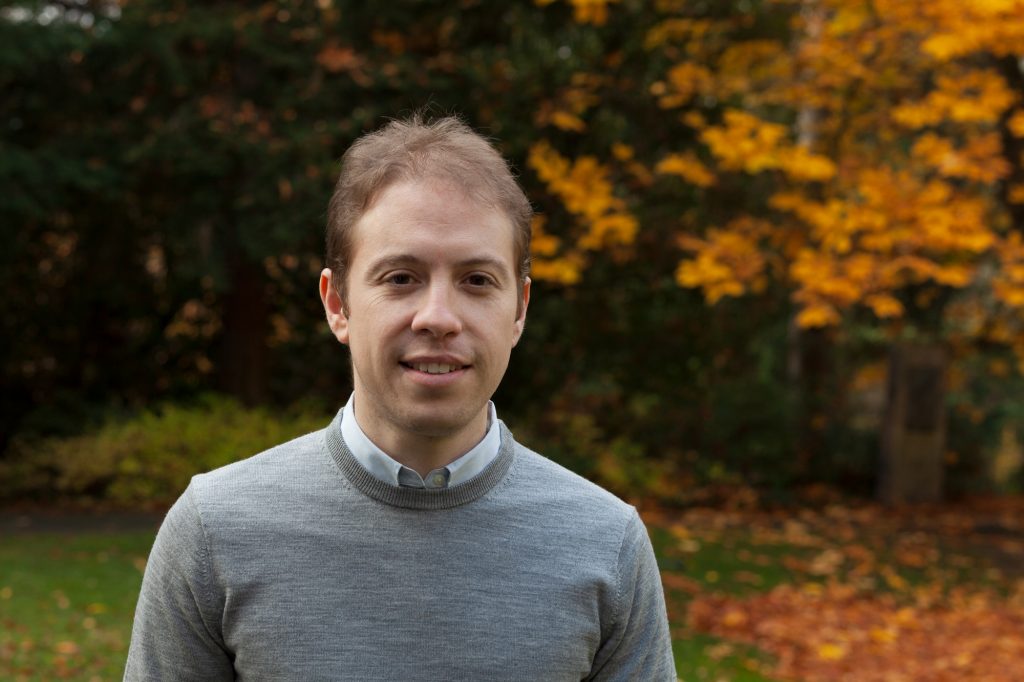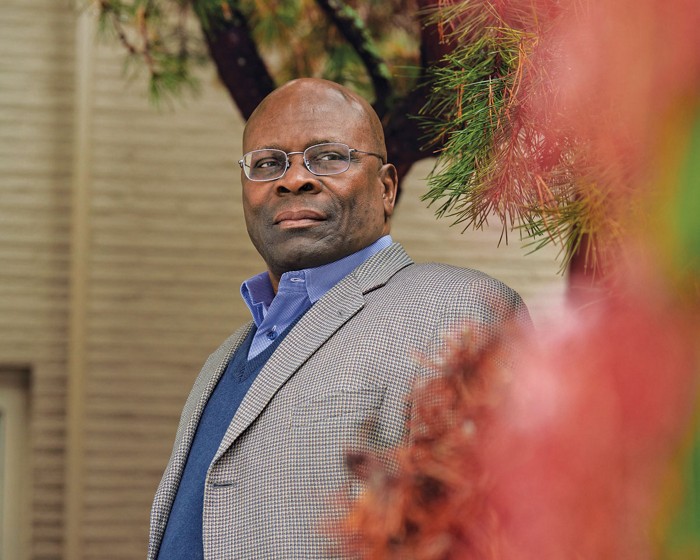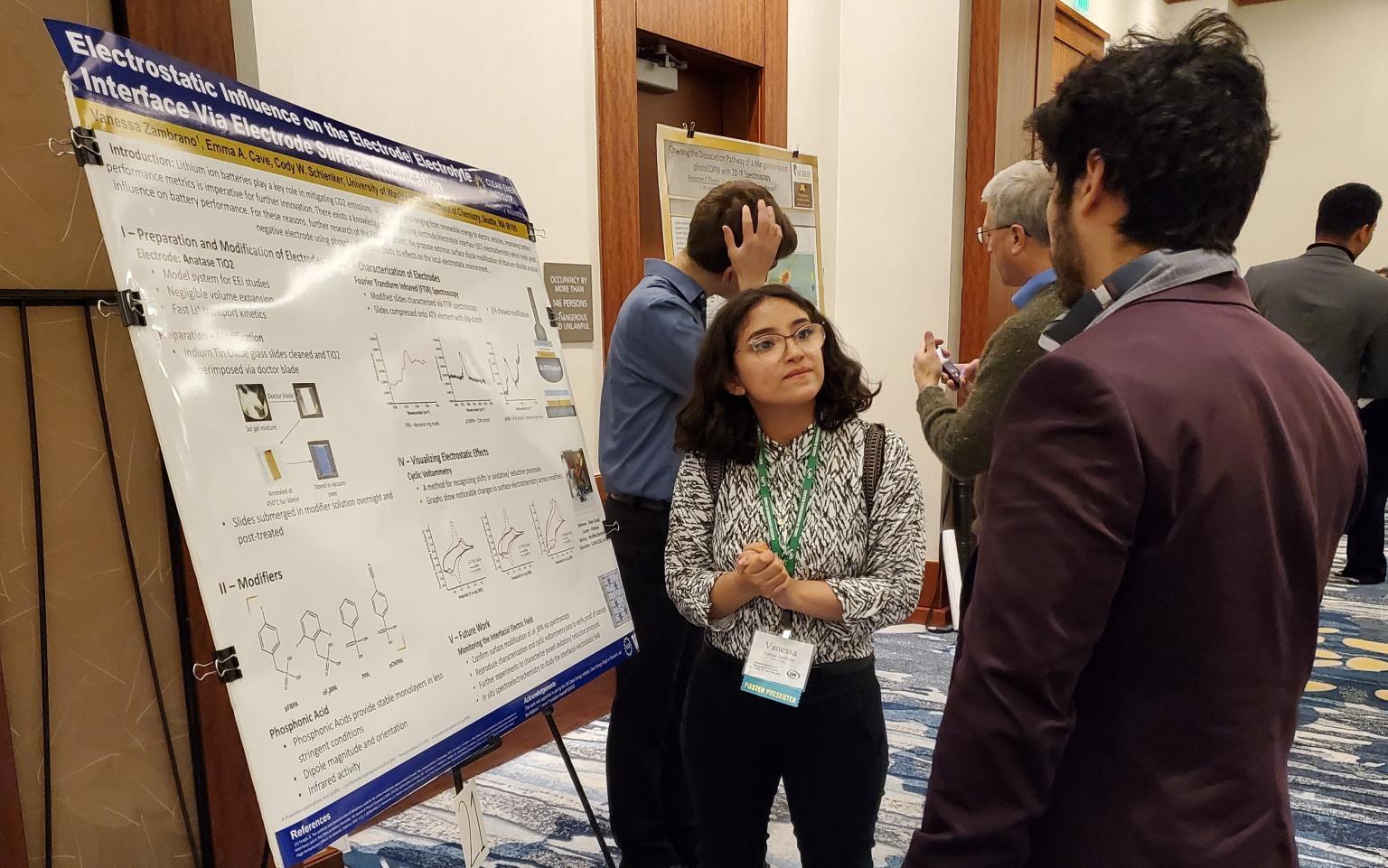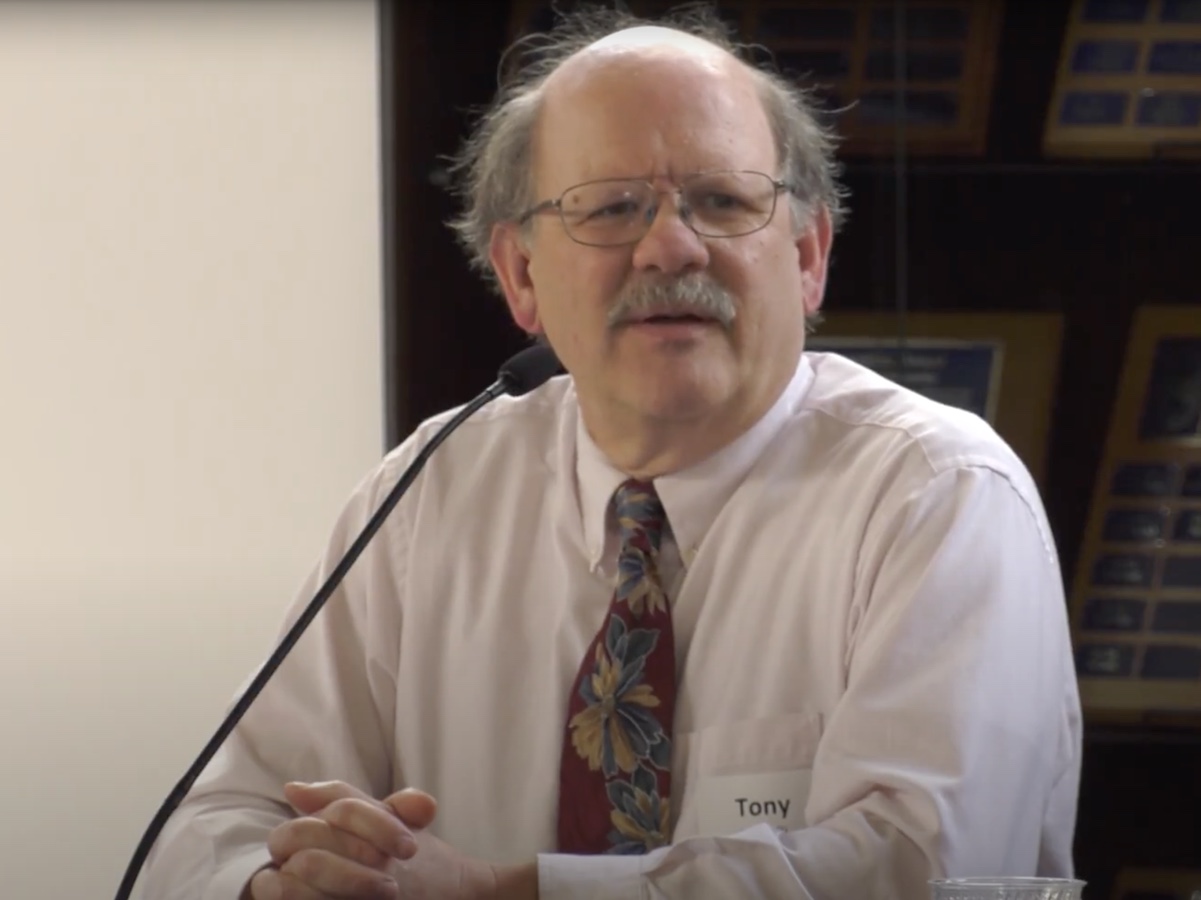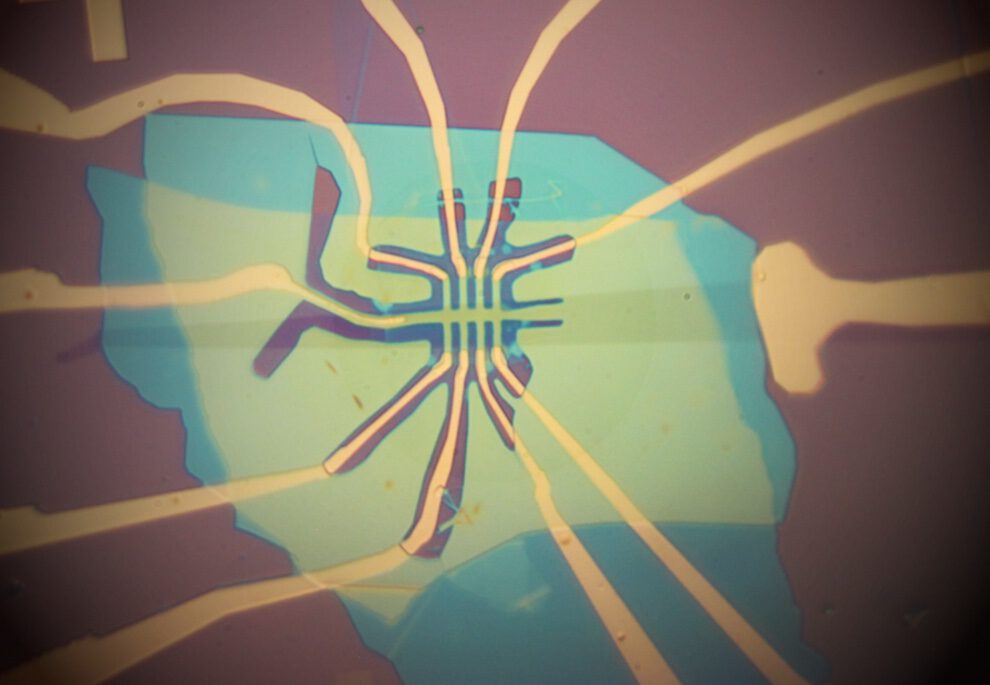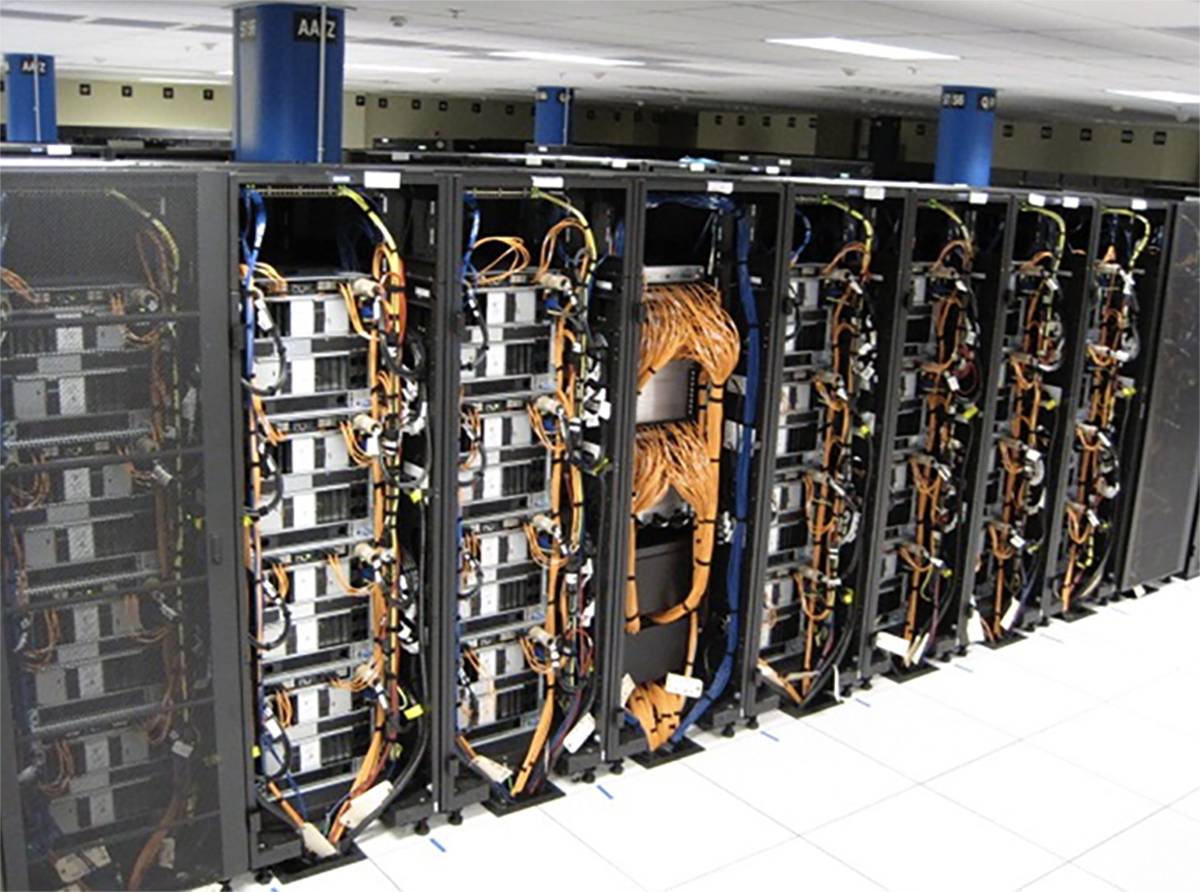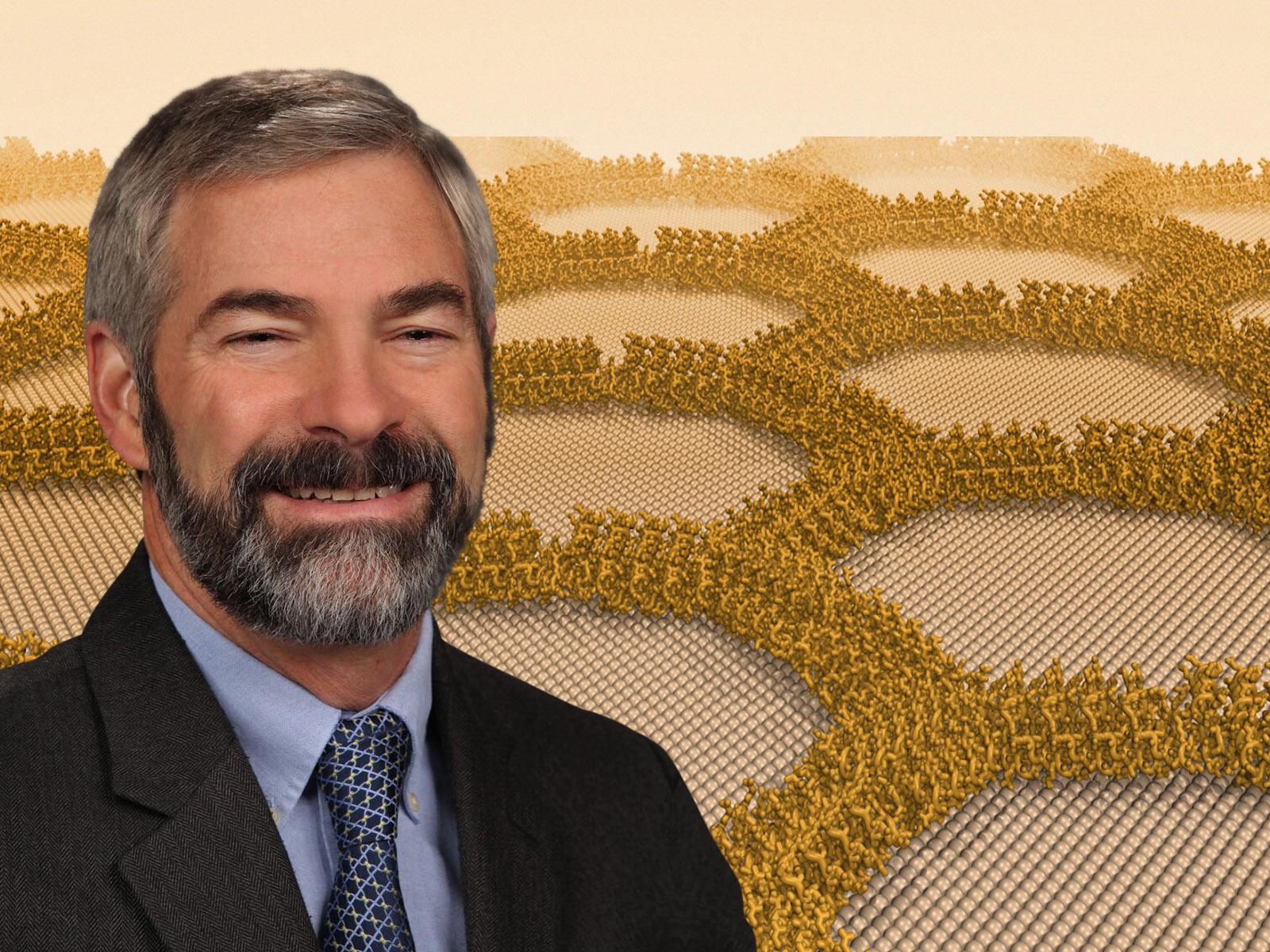Balancing science with service
[vc_row][vc_column][vc_column_text css=".vc_custom_1638294754994{padding-bottom: 10px !important;}"]CEI Graduate Fellow Shua Sanchez is exploring the frontiers of new materials while striving for justice in his community [/vc_column_text][vc_column_text css=".vc_custom_1638294034006{padding-bottom: 10px !important;}"]November 30, 2021[/vc_column_text][vc_column_text css=".vc_custom_1638294188755{padding-bottom: 10px !important;}"]Growing up in small-town Wisconsin, Shua Sanchez’s exposure to science and university research was limited. At a young age, he became aware of climate change and read widely about ways to combat it, but it took until his final year at the University of Wisconsin-Madison for him to decide on a career in the field.[/vc_column_text][vc_column_text css=".vc_custom_1638467858449{padding-bottom: 10px !important;}"]Along the winding path of post-secondary education, Sanchez found his footing as a scholar and scientist. He...
Elevating battery standards for the skies
[vc_row][vc_column][vc_column_text css=".vc_custom_1635896569010{padding-bottom: 10px !important;}"]Astrolabe Analytics wins U.S. Air Force SBIR grant to accelerate battery innovation for electric aviation[/vc_column_text][vc_column_text css=".vc_custom_1635896545655{padding-bottom: 10px !important;}"]November 3, 2021[/vc_column_text][vc_column_text css=".vc_custom_1635896583212{padding-bottom: 10px !important;}"]Astrolabe Analytics has been awarded a Direct-to-Phase II Small Business Innovation Research (SBIR) contract with the United States Air Force (USAF) through the AFWERX Program to address open questions around safely operating and maintaining battery systems in electric aircraft. Astrolabe aims to provide partners in the electric aviation industry with standard operating procedures for online fuel gauging in-flight, offline health maintenance, and end-of-life decommissioning of electric aviation batteries. These data points will allow for more accurate estimates of flight...
Transforming the nation’s electrical grid to better support renewable energy
[vc_row][vc_column][vc_column_text css=".vc_custom_1632856777608{padding-bottom: 10px !important;}"]September 24, 2021[/vc_column_text][vc_column_text css=".vc_custom_1632856510391{padding-bottom: 10px !important;}"]By Wayne Gillam | UW ECE News[/vc_column_text][vc_column_text css=".vc_custom_1632855524622{padding-bottom: 10px !important;}"]It’s probably not news that electric power systems across the country can be vulnerable to extensive outages, as demonstrated by natural disasters such as Hurricane Ida and the 2021 Texas Ice Storm. But what may not be commonly known is that the electrical system the nation depends on, the North American power transmission grid, is still highly dependent on fossil fuels, not only to generate power, but also to restart the system itself when outages occur.[/vc_column_text][vc_column_text css=".vc_custom_1632855539016{padding-bottom: 10px !important;}"]Recently, the U.S. Department of Energy (DOE) announced the creation of a new public-private consortium, which...
NSF to fund revolutionary center for optoelectronic, quantum technologies
[vc_row][vc_column][vc_column_text css=".vc_custom_1631656611024{padding-bottom: 10px !important;}"]September 9, 2021[/vc_column_text][vc_column_text css=".vc_custom_1631656627148{padding-bottom: 10px !important;}"]Originally published by UW News[/vc_column_text][vc_column_text css=".vc_custom_1631656633274{padding-bottom: 10px !important;}"]The National Science Foundation on Sept. 9 announced it will fund a new endeavor to bring atomic-level precision to the devices and technologies that underpin much of modern life, and will transform fields like information technology in the decades to come. The five-year, $25 million Science and Technology Center grant will found the Center for Integration of Modern Optoelectronic Materials on Demand — or IMOD — a collaboration of scientists and engineers at 11 universities led by the University of Washington.[/vc_column_text][vc_column_text css=".vc_custom_1631656639659{padding-bottom: 10px !important;}"]IMOD research will center on new semiconductor materials and scalable...
The technology to reach net-zero carbon emissions isn’t ready for prime time, but…
[vc_row][vc_column][vc_column_text css=".vc_custom_1629999372609{padding-bottom: 10px !important;}"]It’s already under development in research labs.[/vc_column_text][vc_column_text css=".vc_custom_1629999391926{padding-bottom: 10px !important;}"]August 25, 2021[/vc_column_text][vc_column_text css=".vc_custom_1629999462620{padding-bottom: 10px !important;}"]By Daniel T. Schwartz | Originally published in Scientific American[/vc_column_text][vc_column_text css=".vc_custom_1629999477119{padding-bottom: 10px !important;}"]U.S. climate envoy John Kerry recently stated that in order to reach net zero emission goals by 2045, we’ll “need technologies we don’t yet have.” Well, he’s half right. It’s true that battling climate change requires innovative, technologically driven ideas that can be tested, replicated and scaled, at warp speed. But inventing wholly new technology isn’t necessarily the answer, nor is the idea we can deploy today's technology all the way to 100 percent clean energy.[/vc_column_text][vc_column_text css=".vc_custom_1629999489451{padding-bottom:...
Samson A. Jenekhe’s pioneering polymer work paved the way for commercial OLEDs
[vc_row][vc_column][vc_column_text css=".vc_custom_1614189512200{padding-bottom: 5px !important;}"]His semiconducting polymers, found in displays and solar cells, emerged from decades of careful engineering[/vc_column_text][vc_column_text css=".vc_custom_1614189522440{padding-top: 5px !important;padding-bottom: 5px !important;}"]February 22, 2021[/vc_column_text][vc_column_text css=".vc_custom_1614191310168{padding-top: 5px !important;padding-bottom: 5px !important;}"]By Jermey N. A. Matthews | Originally published in Chemical & Engineering News[/vc_column_text][vc_column_text css=".vc_custom_1614189503001{padding-top: 5px !important;}"]In polymer science, it pays to be persistent. University of Washington chemical engineer Samson A. Jenekhe has dedicated decades of research in the lab to understanding and optimizing the properties of semiconducting polymers. In recent years, this persistence has paid off, with some of his work leading to advances that enabled new consumer products—including the glowing screen you might be holding...
Bridging the gap to clean energy research
[vc_row][vc_column][vc_column_text css=".vc_custom_1612460527857{padding-top: 10px !important;padding-bottom: 5px !important;}"]Vanessa Zambrano kickstarted her clean energy career through CEI’s Research Experience for Undergraduates program[/vc_column_text][vc_column_text css=".vc_custom_1612460549979{padding-top: 5px !important;padding-bottom: 5px !important;}"]February 4, 2021[/vc_column_text][vc_column_text css=".vc_custom_1612460561249{padding-top: 5px !important;padding-bottom: 5px !important;}"]Vanessa Zambrano knew that she wanted to become a scientist when she enrolled at San Joaquin Delta College in Stockton, CA. But it wasn’t until a Spanish class discussion about energy crises in Latin America that she started to think about a career as a clean energy scientist, developing solutions that could have a positive impact on the world. At Delta, Zambrano didn’t have any direct connections to research opportunities — let alone with...
Six CEI researchers among world’s most influential scholars
[vc_row][vc_column][vc_column_text css=".vc_custom_1608139387235{padding-top: 5px !important;padding-bottom: 5px !important;}"]UW professors Guozhong Cao, David Cobden, Alex K.Y. Jen, Jun Liu, Xiaodong Xu, and CEI Graduate Fellow Kyle Seyler make Web of Science Group’s 2020 list of Highly Cited Researchers[/vc_column_text][vc_column_text css=".vc_custom_1608139405402{padding-top: 5px !important;padding-bottom: 5px !important;}"]December 16, 2020 [/vc_column_text][vc_column_text css=".vc_custom_1608146657979{padding-top: 5px !important;padding-bottom: 5px !important;}"]Six UW Clean Energy Institute (CEI) researchers are among the most influential in the world, according to the annual Highly Cited Researchers list published by the Web of Science Group. UW professors Guozhong Cao, David Cobden, Jun Liu, and Xiaodong Xu; UW professor emeritus Alex K-Y. Jen; and UW alum and CEI Graduate Fellow Dr. Kyle Seyler (Ph.D....
CEI welcomes first Policy Analyst in Residence Tony Usibelli
[vc_row css=".vc_custom_1601672214531{padding-bottom: 50px !important;}"][vc_column][vc_column_text css=".vc_custom_1602027121454{padding-top: 10px !important;}"]Former WA Commerce energy director mentors UW STEM doctoral students in CEI’s new science policy analysis program [/vc_column_text][vc_column_text]October 7, 2020[/vc_column_text][vc_column_text css=".vc_custom_1602091576871{padding-top: 10px !important;padding-bottom: 10px !important;}"]The UW Clean Energy Institute (CEI) has welcomed Tony Usibelli as its first Policy Analyst in Residence (PAIR). Usibelli has over 30 years of experience in Washington state science and energy policy, including 18 years as the Washington State Department of Commerce energy director. As a CEI PAIR, Usibelli mentors UW science, technology, engineering, and math (STEM) doctoral students participating in CEI’s new science policy analysis program.[/vc_column_text][vc_column_text css=".vc_custom_1602089161863{padding-top: 10px !important;padding-bottom: 20px !important;}"]Thanks to generous...
All together now: Experiments with twisted 2D materials catch electrons behaving collectively
[vc_row][vc_column][vc_column_text css=".vc_custom_1602006386435{padding-top: 10px !important;padding-bottom: 5px !important;}"]By James Urton, UW News[/vc_column_text][vc_column_text css=".vc_custom_1602005322374{padding-top: 5px !important;padding-bottom: 5px !important;}"]October 6, 2020 [/vc_column_text][vc_column_text css=".vc_custom_1602005344894{padding-top: 5px !important;padding-bottom: 5px !important;}"]Scientists can have ambitious goals: curing disease, exploring distant worlds, clean-energy revolutions. In physics and materials research, some of these ambitious goals are to make ordinary-sounding objects with extraordinary properties: wires that can transport power without any energy loss, or quantum computers that can perform complex calculations that today’s computers cannot achieve. And the emerging workbenches for the experiments that gradually move us toward these goals are 2D materials — sheets of material that are a single layer of atoms thick.[/vc_column_text][vc_row_inner][vc_column_inner width="3/4"][vc_column_text css=".vc_custom_1602005353517{padding-top:...
Designing cutting-edge materials from home
[vc_row][vc_column][vc_column_text css=".vc_custom_1598373898336{padding-top: 20px !important;padding-bottom: 10px !important;}"]UW professors Ting Cao and Xiaosong Li bring computational science to the virtual classroom during COVID-19[/vc_column_text][vc_column_text css=".vc_custom_1598377715538{padding-top: 10px !important;padding-bottom: 10px !important;}"]August 25, 2020[/vc_column_text][vc_column_text css=".vc_custom_1598373907152{padding-top: 10px !important;padding-bottom: 10px !important;}"]When Governor Jay Inslee issued the Stay Home, Stay Healthy order to combat the spread of COVID-19 on March 23rd, University of Washington scientists and engineers faced a new challenge: how could they continue to experiment, innovate, and learn while most labs were closed?[/vc_column_text][vc_column_text css=".vc_custom_1598373915648{padding-top: 10px !important;padding-bottom: 10px !important;}"]For materials science & engineering (MSE) professor Ting Cao and chemistry professor Xiaosong Li, both Clean Energy Institute (CEI) member faculty, the shift to...
PNNL-UW materials science pioneer James De Yoreo receives U.S. Department of Energy Distinguished Scientist Fellow Award
[vc_row][vc_column][vc_empty_space height="20px"][vc_column_text]July 30, 2020[/vc_column_text][vc_empty_space height="20px"][vc_column_text]The U.S. Department of Energy (DOE) Office of Science (SC) has named materials science pioneer James (Jim) De Yoreo a 2020 “Distinguished Scientist Fellow.” De Yoreo is co-director of the joint UW-Pacific Northwest National Laboratory (PNNL) Northwest Institute for Materials Physics, Chemistry, and Technology (NW IMPACT), and deputy director of the UW-led Center for the Science of Synthesis Across Scales (CSSAS). De Yoreo is an affiliate professor in both chemistry and materials science & engineering at UW, and is recognized as a UW-PNNL Distinguished Faculty Fellow.[/vc_column_text][vc_empty_space height="20px"][vc_column_text]The DOE recognized De Yoreo for his “transformational discoveries that have reshaped our understanding of...




